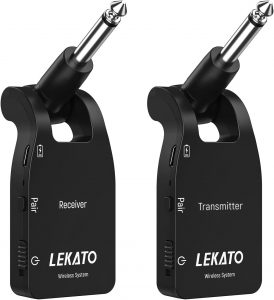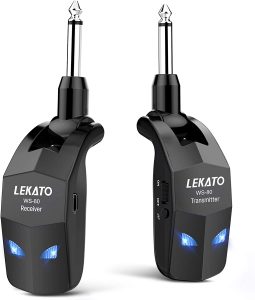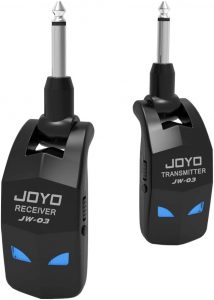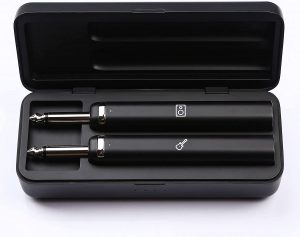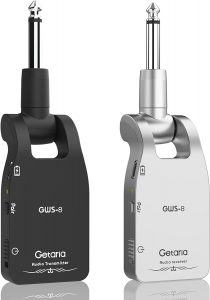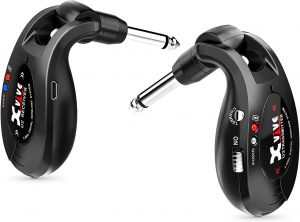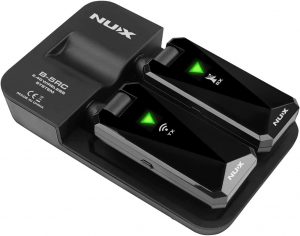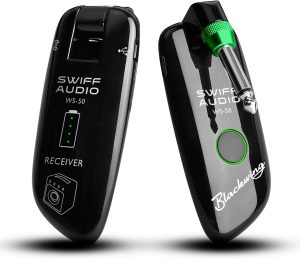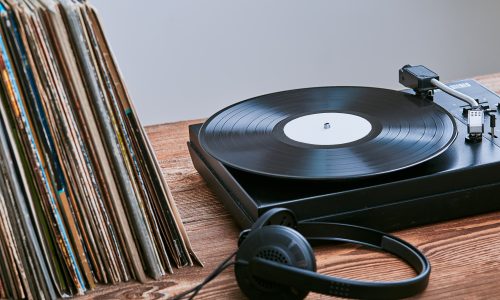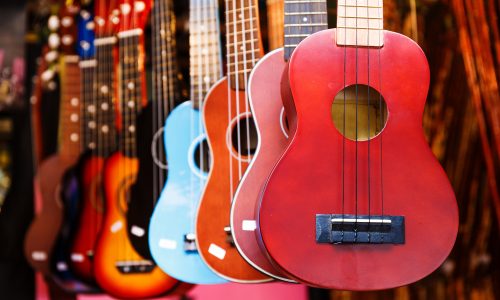The Best Wireless Guitar Transmitter
We looked at the top 8 Wireless Guitar Transmitters and dug through the reviews from 18 of the most popular review sites including and more. The result is a ranking of the best Wireless Guitar Transmitters.

Our Review Process
Don't Waste Your Money is focused on helping you make the best purchasing decision. Our team of experts spends hundreds of hours analyzing, testing, and researching products so you don't have to. Learn more.
Our Picks For The Top Wireless Guitar Transmitters
- 1. LEKATO 2.4GHz 6 Channel Wireless Guitar Transmitter
- 2. LEKATO 2.4Ghz 4 Channel Wireless Guitar Transmitter
- 3. JOYO JW-03 2.4GHz Rotatable Head Wireless Guitar Transmitter
- 4. BrianFay Charging Case UHF Band Wireless Guitar Transmitter
- 5. Getaria 2.4GHZ USB Rechargeable Wireless Guitar Transmitter
- 6. Xvive U2 2.4GHz Low Latency Wireless Guitar Transmitter
- 7. NUX B-5RC Charging Carry Case Wireless Guitar Transmitter
- 8. SWIFF WS-50 Micro USB Charging Wireless Guitar Transmitter
This wireless guitar transmitter offers freedom from cables with a range of 100 feet. It can be used with a guitar, bass, violin and drum. The transmitter system supports six channels.
Freedom from CablesThis wireless guitar transmitter has a range of 100 feet.
This wireless guitar transmitter has a clear signal for about 20 feet. It has a long battery life of over eight hours. The transmitter can support four devices on different channels.
Clear SignalThis wireless guitar transmitter has a range of 20 feet.
This wireless guitar transmitter has no interference. Its range is over 20 meters. The transmitter is user friendly and easy to switch between channels.
No InterferenceThis wireless guitar transmitter has a high-quality signal.
This wireless guitar transmitter has a new design that is modern and high tech. It has a long transmission distance of 100 feet. The transmitter has a battery life of 36 hours.
New DesignThis wireless guitar transmitter is modern and high-tech.
Buying Guide
Whether you’re new to playing the electric guitar or you’ve been an expert for decades, being attached to a cable isn’t always fun. It’s more difficult to move around while you’re playing and the cord can get caught on the things around you. Luckily, you can get a wireless guitar transmitter so you can play freely without being shackled to a cable.
A wireless guitar transmitter system is a handy gadget that enables you to play electric guitar and roam around the rehearsal room, living room, stage or wherever you’re playing. It removes the need for a cable connecting the guitar and the amp, so no cords need to get in your way. There are many different wireless guitar transmitter systems available, with varying wireless ranges, battery life, channels and other features.
How does a wireless guitar system work? It is typically comprised of two parts: the transmitter and the receiver. The transmitter is responsible for wirelessly transmitting the signals from your guitar to the receiver, which is responsible for receiving the signals and sending them to the amp. Both the transmitter and the receiver are small gadgets so they don’t take up a lot of room in your setup. Many of them are powered by battery so they don’t need to be plugged in to use. Some people prefer to mount the receiver on the pedalboard instead of the amp, in which case the pedalboard needs to be connected to the amp via a cable.
Why we recommend these wireless guitar transmitters?
Products Considered
Products Analyzed
Expert Reviews Included
User Opinions Analyzed
Our experts reviewed the top 8 Wireless Guitar Transmitters and also dug through the reviews from 18 of the most popular review sites including and more. The result is a ranking of the best of the best Wireless Guitar Transmitters.
DWYM is your trusted roduct review source. Our team reviews thousands of product reviews from the trusted top experts and combines them into one easy-to-understand score. Learn more.
What to Look For
- One of the most important things to look for in the wireless guitar transmitter is the wireless range. Think about how far you want the transmitter to be able to reach. For example, if you frequently play concerts on large stages, then you may want to have a bigger wireless range as compared to those who primarily play in a garage. Typically, for those who play at home or in small rehearsal spaces, a wireless range of a few dozen feet is good enough. If you’re playing on stage, however, you will want a range that is larger than that.
- Having a large wireless range is helpful for those who like to test how the guitar will sound in different places all over the stage. With a large range, you can freely move around and play all over to determine the best acoustics for the space.
- Many wireless guitar transmitters have multiple channel options. This is helpful for those that play medium to large concerts. Having multiple channels enables musicians to avoid having interference with other wireless equipment or other guitars on the same channel. If you have the flexibility to switch to another channel, you don’t have to worry too much about interference ruining your performance.
- When it comes to price ranges, there are plenty of options. It all depends on what you need, what your budget is and what kind of features you’re looking for. Typically, higher price ranges equal higher quality, but that isn’t always the case. It’s best to read online review from other customers to see whether the product is right for your needs.
More to Explore
While guitars have been around for a long time, the electric guitar is a relatively new phenomenon. It is believed the first electric guitar was invented in 1936 by Jazz guitarist Charlie Christian. He began playing his acoustic guitar using a pickup attached to the body of the instrument. However, a major problem with this setup was feedback, where the sound resonated within the instrument creating an auditory nightmare. As a result, future electric guitars were made without a hollow cavity; the solid-body guitar was made from a single piece of wood. The first solid-body guitar on the market was made by the famous manufacturer Leo Fender and was released in 1949.

